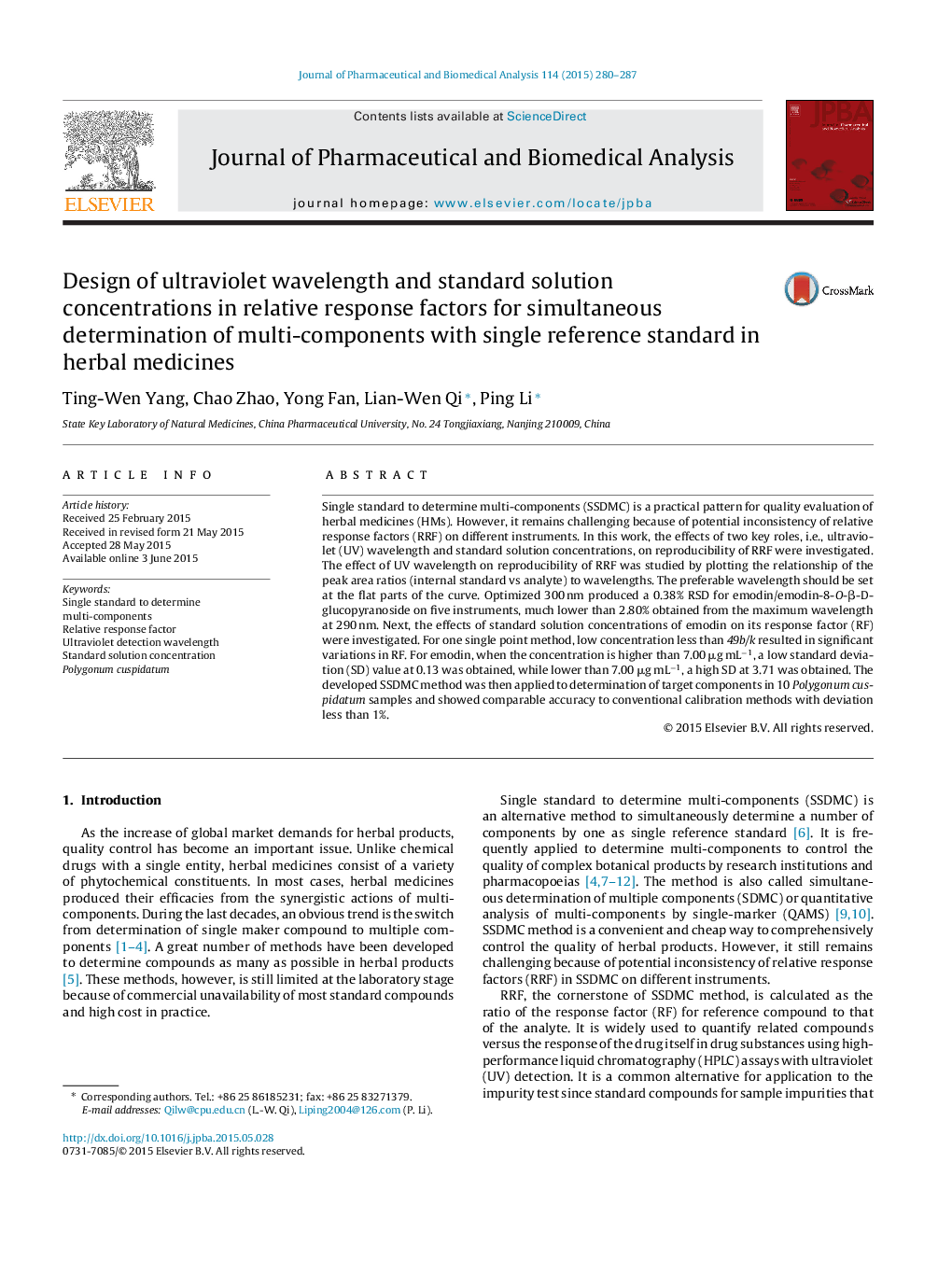| کد مقاله | کد نشریه | سال انتشار | مقاله انگلیسی | نسخه تمام متن |
|---|---|---|---|---|
| 1220805 | 1494621 | 2015 | 8 صفحه PDF | دانلود رایگان |
• The effect of UV wavelength and standard solution concentrations on RRF was studied.
• A peak area ratio-wavelength curve was given to help choose UV wavelength.
• Line regression equation and one single point methods to calculate RRF were compared.
• Suggestions on concentrations were given when using one single point method.
Single standard to determine multi-components (SSDMC) is a practical pattern for quality evaluation of herbal medicines (HMs). However, it remains challenging because of potential inconsistency of relative response factors (RRF) on different instruments. In this work, the effects of two key roles, i.e., ultraviolet (UV) wavelength and standard solution concentrations, on reproducibility of RRF were investigated. The effect of UV wavelength on reproducibility of RRF was studied by plotting the relationship of the peak area ratios (internal standard vs analyte) to wavelengths. The preferable wavelength should be set at the flat parts of the curve. Optimized 300 nm produced a 0.38% RSD for emodin/emodin-8-O-β-D-glucopyranoside on five instruments, much lower than 2.80% obtained from the maximum wavelength at 290 nm. Next, the effects of standard solution concentrations of emodin on its response factor (RF) were investigated. For one single point method, low concentration less than 49b/k resulted in significant variations in RF. For emodin, when the concentration is higher than 7.00 μg mL−1, a low standard deviation (SD) value at 0.13 was obtained, while lower than 7.00 μg mL−1, a high SD at 3.71 was obtained. The developed SSDMC method was then applied to determination of target components in 10 Polygonum cuspidatum samples and showed comparable accuracy to conventional calibration methods with deviation less than 1%.
Figure optionsDownload as PowerPoint slide
Journal: Journal of Pharmaceutical and Biomedical Analysis - Volume 114, 10 October 2015, Pages 280–287
